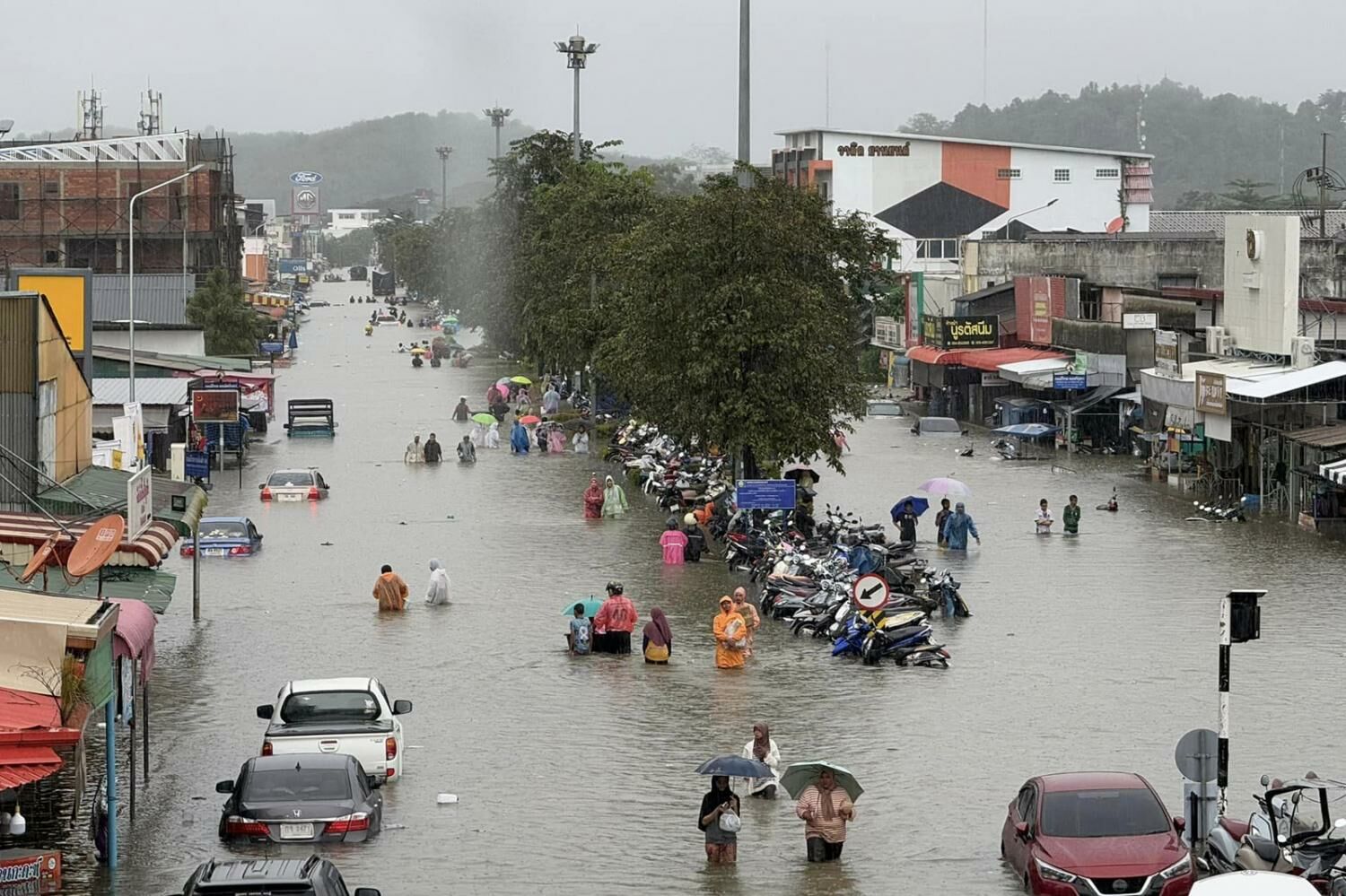Songkhla floods wash away bookings in Hat Fai wipeout (video)

Flood chaos in Songkhla and the wider Deep South has left the Malaysian market in tatters, forcing a total wipeout of hotel and tour bookings in Hat Yai for the next two weekends. The relentless downpours have thrown travel plans into disarray, causing a domino effect on local tourism, just as things were heating up.
Songchai Mungprasithichai, the head chief of the Songkhla Tourism Promotion Association, spilled the beans on the widespread cancellations, blaming the extensive floods in southern Thailand and the appalling weather tormenting many Malaysian states, particularly Kelantan.
Border checkpoints are choked, and some weary travellers have faced flight cancellations this week, throwing their plans into disarray, said Songchai.
“Tour groups and individual tourists alike have binned their trips to Hat Yai for this weekend and the next. Hat Yai itself may have dodged the flood bullet, but the surrounding districts are a soggy mess.”
Before the heavens opened, Songkhla, along with its neighbours Pattani, Narathiwat, and Yala, had been lapping up a steady surge of Malaysian visitors.
Hat Yai was buzzing, flaunting a cracking 70% occupancy rate at weekends. But now, this inundation emergency has slammed the brakes on their momentum, and tourism operators are chomping at the bit for the end of this watery nightmare in time for December’s festive feasts.
Despite the current soggy setback, Songchai is crossing his fingers that Hat Yai’s woes will be brief. He’s boldly predicting that Songkhla’s bustling economic hub could still reel in between 1 and 1.5 million Malaysian visitors this year, reported Bangkok Post.
The new year holiday season, however, remains stuck in the mud, with potential tourists casting a wary eye on the flooding situation. Many are playing it safe, pushing their getaways back to Chinese New Year, aligning with the mid-January to mid-February school break, perfect timing for a week-long jolly, added Songchai.
“Towards the end of January, Hat Yai hotels were packed to the rafters as both international and UK tourists prepared to ring in the festive season.”
Casting a shadow over hopes for a speedy recovery, Songchai crossed his fingers that the current deluge doesn’t echo the devastating floods of 2000 and 2010, which brought Hat Yai to its knees. The Tourism and Sports Ministry chimed in, revealing that Malaysian tourist arrivals have hit 4.4 million, second only to the Chinese market with its immense 6 million visitors.
The tourism sector clings to cautious optimism, hoping to swiftly shrug off the storm-induced disruptions and welcome tourists back with open arms. As Hat Yai waits for the rain to relent, the big question lingers: when will the skies finally clear, and the tourists flood back in?
What Other Media Are Saying
- Bangkok Post reports Malaysia’s consul advising citizens in Thailand to remain vigilant due to severe weather, highlighting storm impacts on popular tourist areas and the recent damage to Malaysian vehicles. (read more)
Frequently Asked Questions
Here are some common questions asked about this news.
Why is Hat Yai tourism so sensitive to regional flooding?
Hat Yai’s tourism relies on border proximity and ease of travel, making it vulnerable to disruptions from regional weather conditions.
How might future weather patterns influence Hat Yai’s tourism resilience?
Future weather patterns could necessitate adaptive strategies in infrastructure and marketing to bolster resilience against climate impacts.
What if the flooding recurs during peak tourist seasons?
Recurring floods could deter future bookings and compel a shift in marketing strategies to minimize economic losses during peak times.
How does the reliance on Malaysian tourists impact Hat Yai’s tourism strategy?
Dependence on Malaysian tourists necessitates a flexible strategy that can pivot during cross-border disruptions to maintain economic stability.
What measures could Hat Yai adopt to mitigate future flooding impacts?
Implementing improved infrastructure, predictive weather analytics, and diversified tourism offerings could reduce vulnerability to flooding.
Latest Thailand News
Follow The Thaiger on Google News:


























